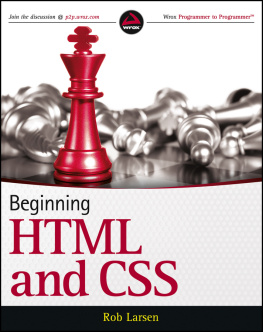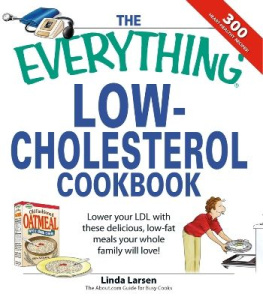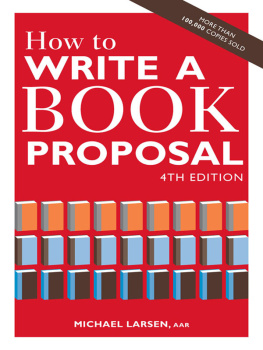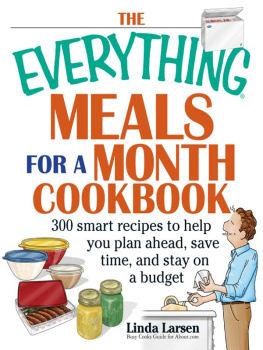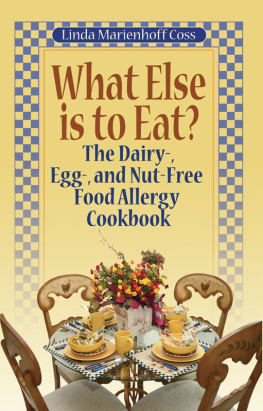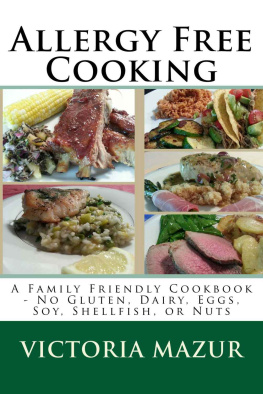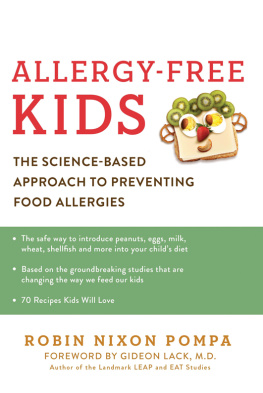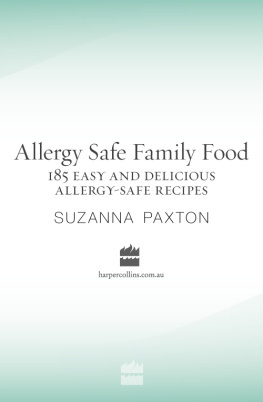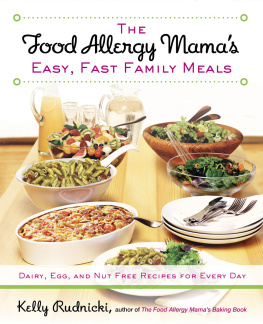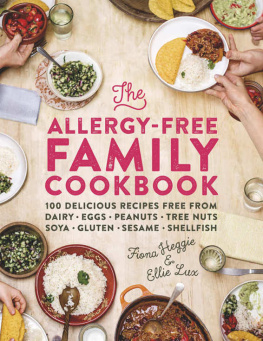THE

FOOD ALLERGY COOKBOOK
Dear Reader,
As an adult, my mother developed food allergies to shellfish and artichokes.
She learned this the way anyone learns of an allergyby becoming sick after eating the food. She has been lucky so far; the reactions havent been life threatening, but they are becoming more severe.
My face gets flushed and I feel warm when I eat foods that contain a large amount of FD&C Yellow No. 5, a food dye. This is a sensitivity to an additive, not an allergy. But it makes me wonder if Im going to develop food allergies.
An allergy to shellfish would be difficult for me to adjust to, since shrimp is one of my favorite foods.
While its true that most food allergies start early, you can develop allergies at any time in your life. Its important for all of us to learn the signs of an allergy and what to do if they appear.
Thankfully, the government has been a bit more proactive in this area, and labeling requirements are becoming more stringent. Manufacturers are responding to people with allergies, creating dedicated factories and developing many new products. Many schools are becoming peanut free.
All of these are responsible, prudent reactions to these potentially life-threatening situations. But if you or someone in your family has a food allergy, its still ultimately up to you to be vigilant. Reading labels and asking questions of food preparers will become second nature. The good news is, if you take control of the situation, you can eat better and more varied food than you ever dreamed. Lets get started!
Linda Larsen
Welcome to the

Series!
These handy, accessible books give you all you need to tackle a difficult project, gain a new hobby, comprehend a fascinating topic, prepare for an exam, or even brush up on something you learned back in school but have since forgotten.
You can choose to read an Everything book from cover to cover or just pick out the information you want from our four useful boxes: e-questions, e-facts, e-alerts, and e-ssentials. We give you everything you need to know on the subject, but throw in a lot of fun stuff along the way, too.
We now have more than 400 Everything books in print, spanning such wide-ranging categories as weddings, pregnancy, cooking, music instruction, foreign language, crafts, pets, New Age, and so much more. When youre done reading them all, you can finally say you know Everything!

| 
| 
| 
|
Answers to common questions | Important Snippets of Information | Urgent Warnings | Quick handy tips |
PUBLISHER Karen Cooper
DIRECTOR OF ACQUISITIONS AND INNOVATION Paula Munier
MANAGING EDITOR, EVERYTHING SERIES Lisa Laing
COPY CHIEF Casey Ebert
ACQUISITIONS EDITOR Brielle Matson
DEVELOPMENT EDITOR Brett Palana-Shanahan
EDITORIAL ASSISTANT Hillary Thompson
Visit the entire Everything series at www.everything.com
THE

FOOD ALLERGY
COOKBOOK
Prepare easy-to-make
mealswithout nuts, milk,
wheat, eggs, fish, or soy
LINDA LARSEN,
B.S. in Food Science and Nutrition

Avon, Massachusetts
Dedication
To my sisters, Laura and Lisa, for being my best friends. We had a great time growing up together, and we still do.
Contents
Introduction
There have been many news stories lately about severe food allergies and anaphylactic reactions that have ended in death. If you have a food allergy, you know about it because you have a reaction to food. But whats the difference between a true food allergy, food intolerance, and sensitivity to food? What are the medical tests you need, and how can you take care of yourself?
Food allergies are the fastest-growing form of allergies in the world. In the United States, while asthma rates have stabilized, allergic reactions to food are skyrocketing. In the United Kingdom, anaphylaxis cases have tripled in the last five years. Symptoms can range from a flushed face and upset stomach to full-blown anaphylactic shock and death.
These allergies are difficult to deal with because of our intimate relationship to food. What we eat literally becomes part of our bodies. What causes food allergies? How can you get an accurate diagnosis and keep yourself healthy? And is there hope for treatment and cures in the future?
Only about 2 percent of the American adult population and 8 percent of children have a true food allergy. Many people think they have food allergies when they actually dont. The only way to know if you are truly allergic to a food is to be tested by a doctor, using one or more accurate, proven tests.
More people are intolerant of foods or sensitive to ingredients in them. The differences do not necessarily include difference in severity, but whether the reaction to the food takes place in the immune system or is confined to the digestive tract. Food intolerances and sensitivities, however, usually do not include anaphylactic reactions.
On the surface, it may seem easy to just avoid the foods you are allergic to, but the food industry is a large and complex organization: Many foods are manufactured with dozens of ingredients, and the food you are allergic to can hide behind many names. Cross-contamination, whether in the final stages of cooking or food production or while the food is growing, is also a huge problem, especially for those with life-threatening food allergies.
At the time of this writing, researchers at the North Carolina Agricultural and Technical State University have produced allergen-free peanuts. Tests show 100 percent inactivation of the allergens in assays and serum tests. Well see how this works in the real world. Will it be possible to completely replace peanuts with this new strain? Or will this breakthrough just confuse the matter?
Meanwhile, if you shop carefully, read labels, and have found good substitutes for the food or foods you are allergic to, you can transform most recipes to fit your needs. For instance, if you are allergic to milk, and a recipe calls for butter but everything else is fine, substitute solid shortening or vegetable oil or a dairy-free vegan margarine.


